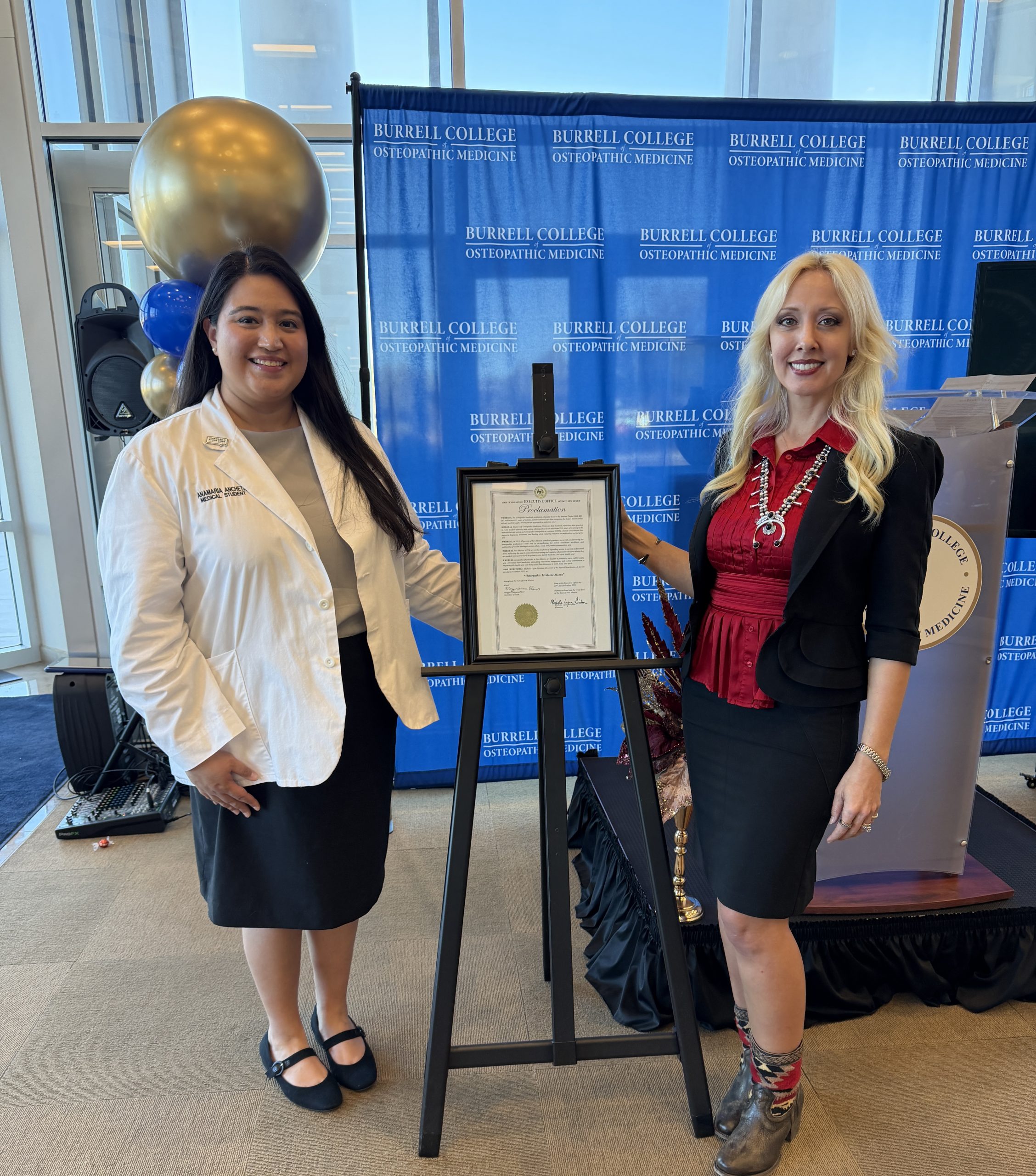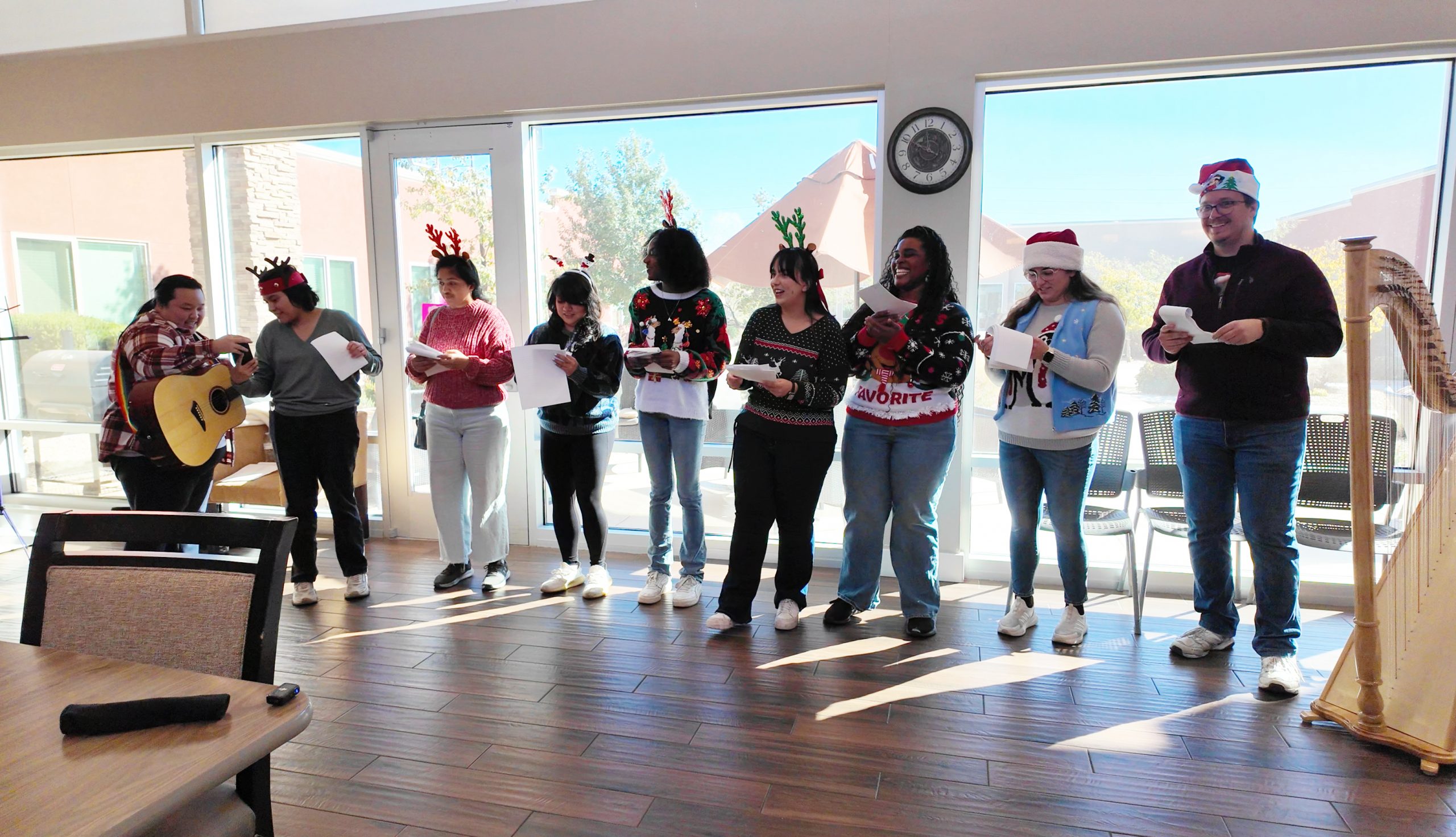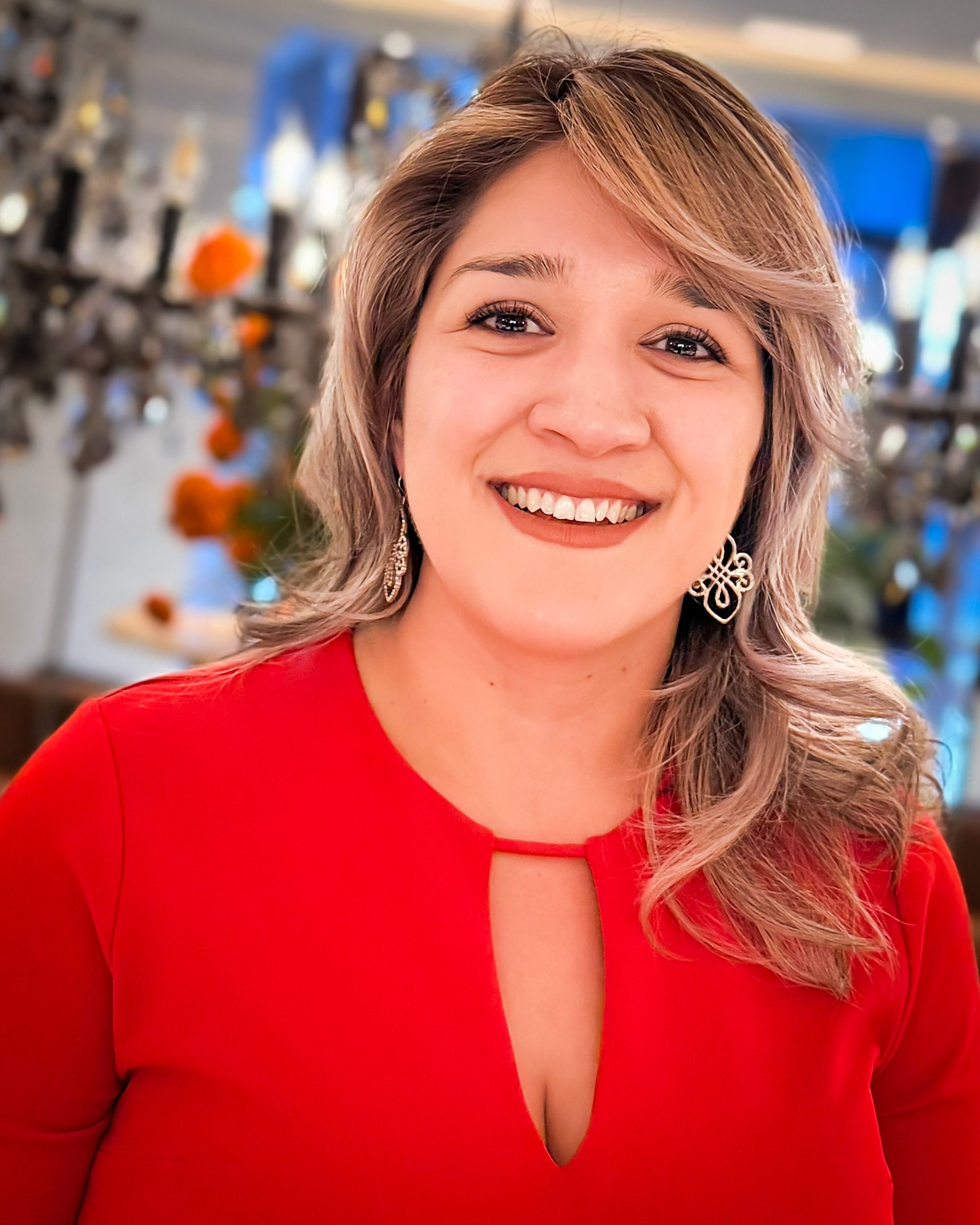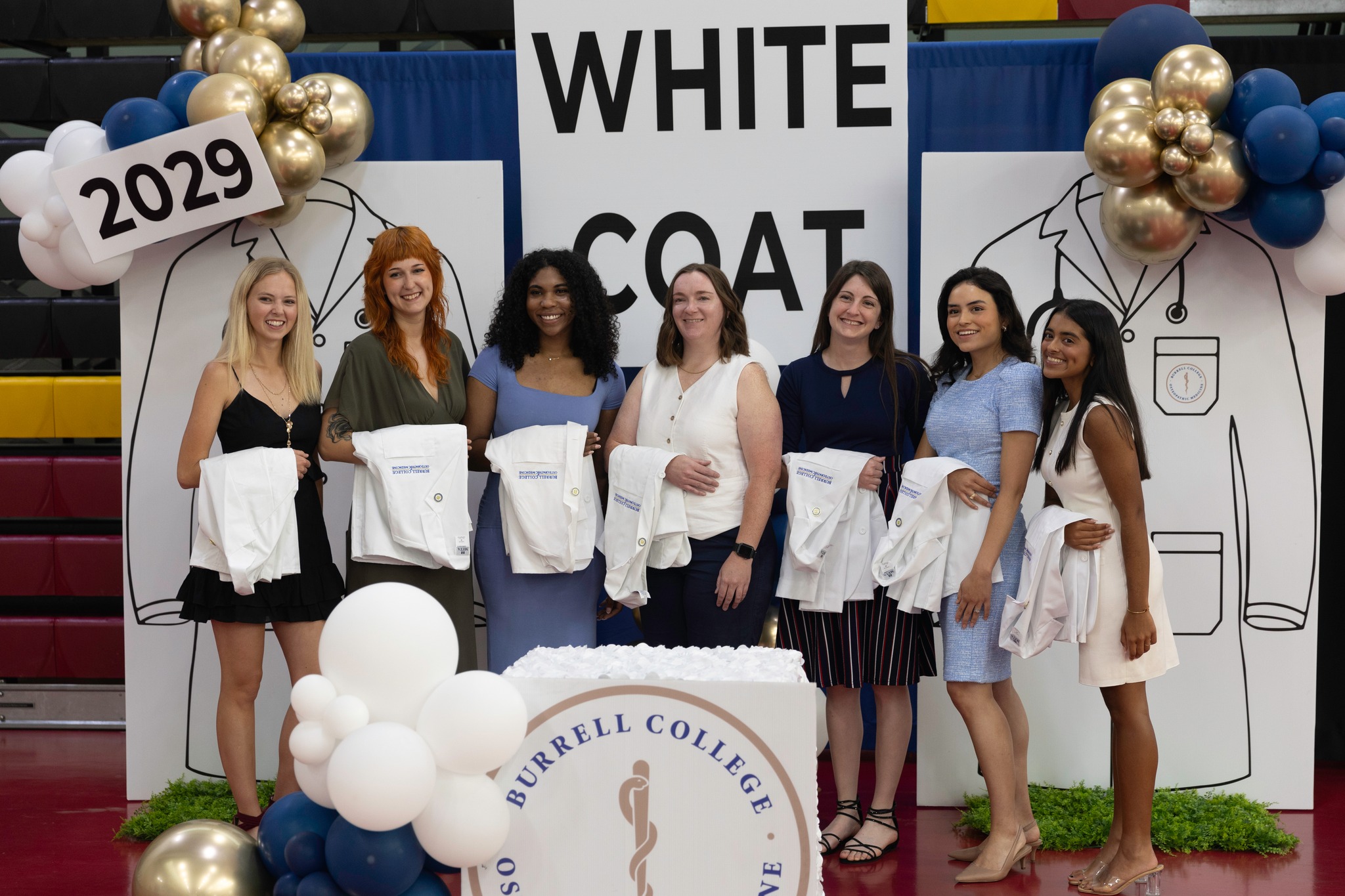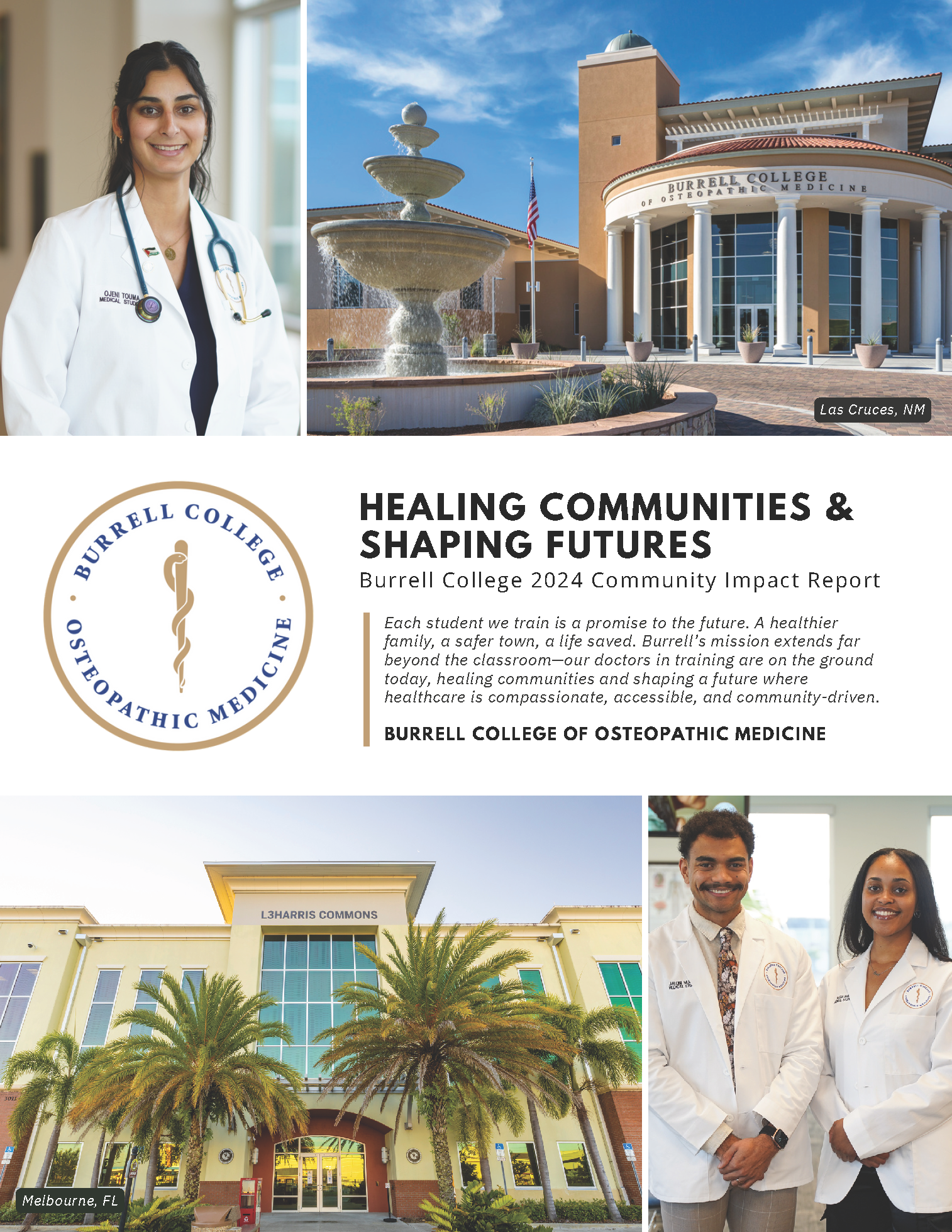
Cindy Funk, Ph.D., accepted a position as a professor of anatomy at the Burrell College of Osteopathic Medicine for two reasons. First, she “fell in love” with the mission. “Every college has a mission, but you don’t always feel it in every person you meet. You feel it from top to bottom here,” she said. “Everyone strongly believes they are going to make a difference. Even those of us that aren’t from here, we still feel connected to this community.”
Her second reason? She may just be a glutton for punishment. “I really love being part of new schools—discovering the opportunities that present themselves, watching the culture bloom. Any start up is very challenging, but there’s something about it that I love.”
Growing up on a farm in rural Montana, Dr. Funk originally thought she wanted to be a veterinarian, until she worked at a veterinarian’s office and realized it wasn’t the life for her. Instead, she dissected her first cadaver during a college anatomy class and found a new passion. “It was completely fascinating to me to see the beauty of the human body inside and out,” she remembered. “I was just enthralled by what I was learning and realized that maybe academics was the pathway for me.”
At Montana State University, she took a teaching assistant position in the anatomy lab and a research position in her advisor’s lab for her entire junior and senior years and ended up finding a second passion in life for teaching. After completing her Ph.D. in anatomy and neurobiology at Texas A&M, she pursued a four-year split post doctorate, studying the effects of alcohol addiction on the brain at the University of Bordeaux in France and at the prestigious Scripps Research Institute in San Diego with Dr. George Koob, who is now the director of the National Institute on Alcohol Abuse and Alcoholism. The research she and others published during this time was some of the first to establish a role of the brain neurotransmitter CRF in alcoholism.
For four years she combined her loves of anatomy, research, and teaching, until it came to the point that something had to give. “I realized I couldn’t do both research and teaching both to high quality; one had to be primary and the other secondary,” Dr. Funk said. “I realized that teaching is what I get excited about when I wake up every morning.”
In 2007, she became one of the founding faculty members at the Rocky Vista University College of Osteopathic Medicine in Parker, Colorado where she spent ten years in the Anatomy Department, served as the phase director for the first year curriculum, and was awarded for four consecutive years the William Osler Award for Excellence in Teaching.
When former colleagues, including her mentor Dr. Robert Ketchum, urged her to consider moving to New Mexico, she realized she was craving the challenge of a brand new college. Dr. Funk and her husband, Josh, along with their eight-year-old son, have been enjoying life in the Mesilla Valley for the past year and a half. They’ve already logged over 200 miles hiking trails in Cloudcroft, Alamogordo, and the Organ Mountains, and Funk admits she’s developed a bit of an obsession with green chile. “I love everything with green chile. I didn’t even know about them before coming to New Mexico and now I’m crazy about them. My husband says if I start putting them on cereal, I’ve gone too far,” she said with a laugh.
While she admits that it can be a struggle balancing quality family time with her job, she enjoys every minute she spends at work. “I adore students, and particularly medical students,” she noted. “They are a wonderful mix of being incredibly intelligent, compassionate, and curious, but also a little bit quirky.” She added that she finds satisfaction in helping them through the “pressure cooker” of the first two years of medical school, and she’s excited to follow them as they progress through clerkships, residencies, and their careers.
Dr. Funk is also enjoying the novel and very modern teaching methods BCOM has adapted. Most medical universities have students do cadaver dissections in the very first year. At BCOM, anatomy is studied primarily through technology and imaging like MRIs and CTs the first two years. Cadaver dissection is reserved for third and fourth year students who already have a strong grasp on human anatomy. “Other schools are already interested in what we are doing here,” she said. “It will be a successful system because all physicians, no matter what specialty or field they go into, need to know how to interpret and understand anatomy through images. It’s a very important part of the job for any physician.”
Anatomy is particularly important for osteopathic physicians, many of whom use it as the basis of their practice for Osteopathic Manipulative Treatment. Dr. Funk said she had no idea what osteopathy was when she applied to Rocky Vista, but that after working for more than a decade in osteopathic schools, she’d never work anywhere else.
Recently, Dr. Funk was accepted into the Costin Institute for Osteopathic Medical Educators. The year-long program, which she will complete in September, aims to provide training, support, and networking for osteopathic educators to make them more effective instructors and leaders. She said she’s learned more than she expected already and that she’s putting the principles into practice with her work at BCOM.
Her involvement in the program all comes back to that mission that pulled her to the southern New Mexico in the first place. She said, “It’s these students who are going to go out there and provide better and more healthcare for the people in this region. For me, I like working behind the scenes and playing my part as an educator to hopefully make the world a better place.”


